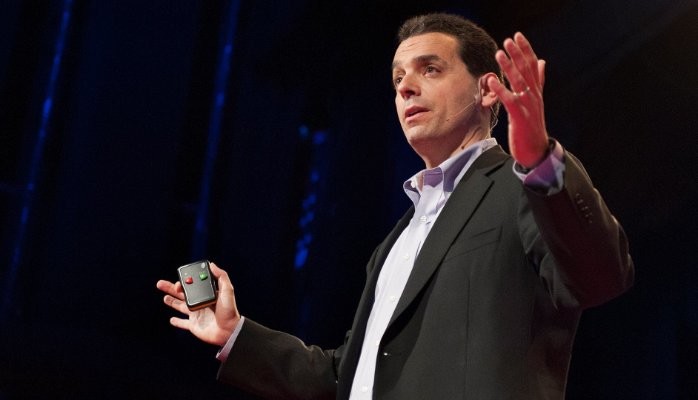
3 tips for TED speakers (and anyone else giving a talk)
Late last month, I had a chance to attend the TED Summit in beautiful Banff, Alberta. It was, like most TED gatherings, pretty spectacular in both form and content. Over the years, one thing I’ve noticed at these events and others is the heightened attention people seem to be paying to “public speaking” as a skill. So — with that in mind and fresh from my experience — here’s an update version of my three tips for TED and speakers (and other talkers).
1. Prepare . . . but not too much.
These days, very few TED speakers arrive unprepared and just try to wing their presentations. That’s great. Preparing is a sign of respect for your audience — and the only way to wrangle your ideas inside a 12- or 18-minue fence. But lately I’ve seen a handful of people who were too prepared and too rehearsed. Their presentations were so heavily shellacked that they seemed inauthentic; their ideas suffocated under all that varnish. Remember: Human beings, despite their imperfections (and sometimes because of their imperfections), are far more persuasive than expertly-tuned presentation robots. One of my very favorite speakers at the TED Summit had her notes on stage with her and looked at them periodically. So if you need notecards, use notecards!
2. Say something important.
There’s a big difference between saying some important things and saying something important. Your goal isn’t to demonstrate how much you know or to catalog your many insights, but to leave the audience with one idea to ponder — or better, one step to take. The speakers in Banff who stumbled were the ones to tried to cram too much inside the skin of their speech — a personal story, 3 nifty charts, an abbreviated history of their discipline. When people hear some important things, their heads nod. When they hear something important, their souls stir, their brains engage, and their bodies prepare to act.
3. Say it like yourself.
Don’t mimic someone else’s style or conform to what you think is a particular “TED way” of presenting. That’s boring, banal, and backward. And one thing that worried me slightly at the TED Summit was that several speakers kinda, sorta sounded the same. Beware. Learn from the greats. But don’t try to be the next Ken Robinson or Susan Cain. Be the first you.
Daniel H. Pink is the author of five provocative books — including three long-running New York Times bestsellers, A Whole New Mind, Drive, and To Sell is Human. Dan’s books have been translated into 35 languages and have sold more than 2 million copies worldwide. He lives in Washington, DC, with his wife and their three children.
ANALYST - ADVISOR – AUTHOR - PR to Drs, Scientists, Technocrats, Entrepreneurs & CEOs on Pharma – Healthcare – Mindcare | R&D | Education | L&D | HR | Financial sectors #Founder Re-MIND & ALTAVEU Group | KEYNOTE SPEAKER
4yRelevant + Authentic + Engaging = Impactful Communication
GENOS: Globally recognized Emotional Intelligence Solutions for Selection, Development, Training & Certification.
4yGreat insights!!!
Org. Psychologist/Podcaster/Speaker/ Solutionist/ help leaders with solutions to desired outcomes.
6yvery valuable information, be yourself as a speaker so you come across authentic.
Public Speaker ✔ Trend Sensemaker ✔ Executive Whisperer ✔ Innovator ✔ Author ✔ Former Microsoft Exec ✔ founder The Dualarity & Visual Senseformers
6yLove the simplicity of your message. Remain authentic, shoot for the heart, capture the mind and leave with a smile.
Co-Founder, Chief Idea Guy @ Growth Engine the Innovation Agency
6y6) Until finally.... I discovered this formula in Dan's terrific book, To Sell is Human... Which I began reading in print several years ago but for some reason never finished. So, I just recently listened to the entire Audible version... And it's a fantastic listen! Note: The Pixar formula is towards the end of the book. Bryan